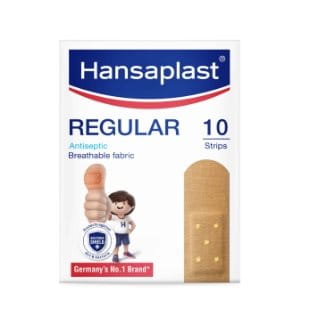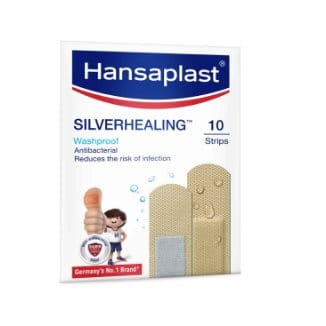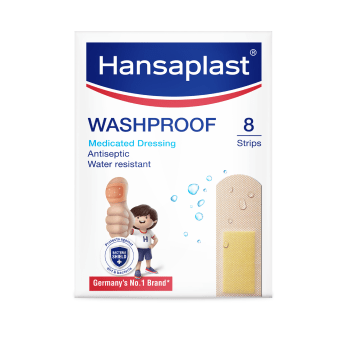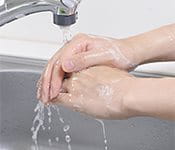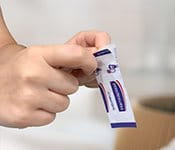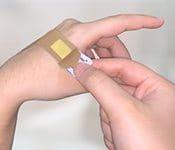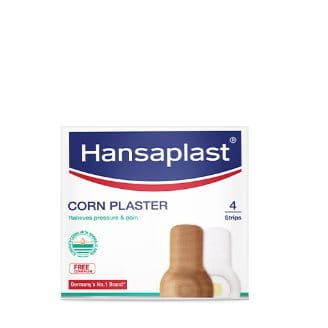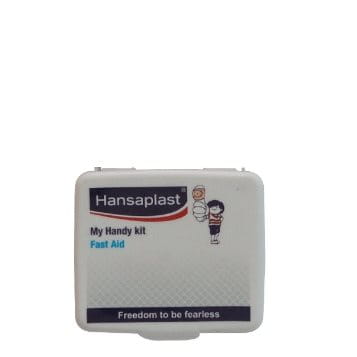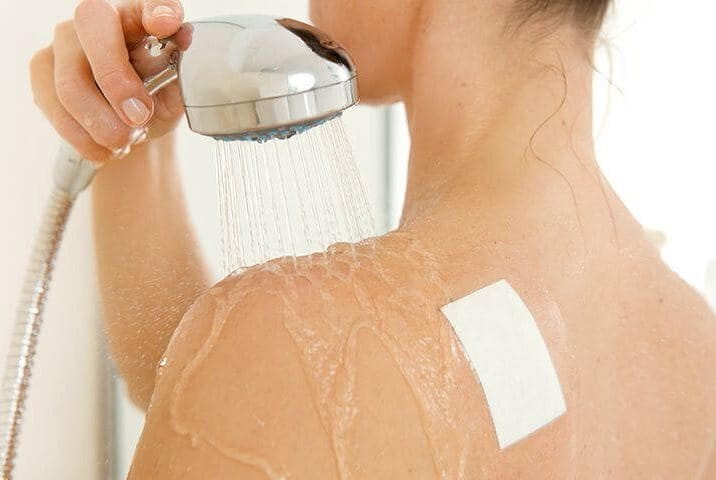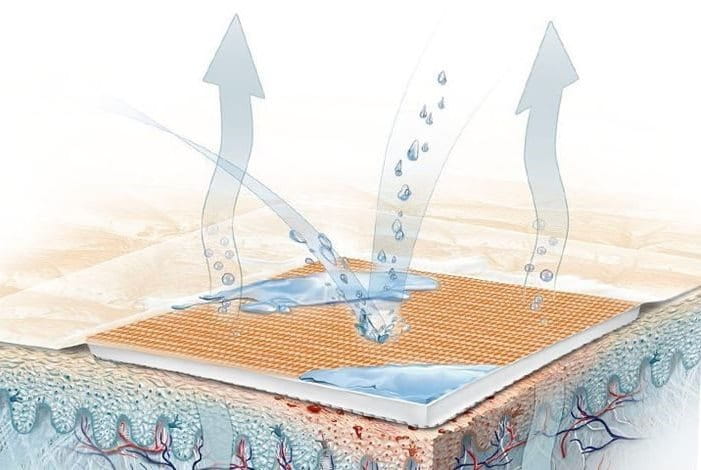Washproof Plaster
Product Info
Washproof Plaster
The Hansaplast Washproof Plaster is a perfect bandage for wounds to protect them against water and infections. It is advised to clean and secure the wound with a washproof bandage that ensures your wound’s safety whenever it comes in contact with water. Washproof bandages are best suited for everyday cuts and bruises, apt for the medical cabinet at home. This bandage for wounds is made up of several protective layers: it consists of a comfortable wound pad that provides optimum coverage for faster healing

*protects against dust and bacteria
How to Use
-
What are washproof plasters?
As the name suggests, washproof plasters are meant to protect the wound against contact with water. The waterproof plaster seals itself around the wound, blocking the entry of water. This protects the wound against water-borne bacteria, keeping it safe from infection.
Hansaplast washproof plasters stay in place, even when wet, making them perfect for everyday use. Our waterproof bandage is made up of several protective layers and a comfortable wound pad. Its stronghold adhesive is long-lasting and can withstand contact with water, providing optimum coverage for faster healing of the wound.
-
Why and when to use washproof wound plasters?
When a wound is just beginning to heal, prolonged contact with water can cause the skin to swell which impairs the wound’s healing process. While you cannot avoid contact with water entirely, you can choose the right waterproof plasters for wounds to stay secure. Hansaplast washproof plasters protect against water and keep your wound under optimal conditions for faster healing. They are ideal for treating minor wounds, especially around the hands, since they can withstand frequent washing. These plasters provide a convenient wound healing solution for swimmers and young children as well. -
How often should I change the waterproof bandage?
As with regular bandages, waterproof bandages should be changed every day, or often if needed. However, if there is any exudate leaking through the plaster, you should change it immediately. Changing the plaster regularly ensures that your wound stays protected against infection and heals faster. -
Can waterproof plasters be used to protect wounds while washing hands or showering?
Hansaplast washproof plasters are designed to stay on even when in contact with water. Each waterproof plaster is made up of several protective layers and has the added benefit of strong adhesion, which keeps the plaster in place while washing your hands or showering. The plaster forms a seal around the wound that cannot be breached by water, dirt or bacteria. This makes it ideal for daily use, apply the plaster to keep your wound well protected and free from infection. -
How to clean and disinfect wounds at home?
Cleaning your wound is the first step in every wound care procedure. It reduces the risk of infection and aids in faster healing.
Before you begin cleaning the wound, wash your hands thoroughly. You can use disposable gloves as well, if available.If the cut is bleeding-
- Apply pressure using a clean, non-fibrous cloth or sterile gauze
Once the bleeding has stopped, follow these steps-
- Run the wound under clean, cool water
- Do not put soap on an open wound
- Make sure there is no debris stuck in the wound
You can use saline water to effectively disinfect the wound site before applying the washproof bandage.
-
When to consult a doctor for wound care?
While minor cuts can be treated successfully at home by simply using Hansaplast wound plasters, you should consult a doctor if-
- The wound is bleeding profusely
- Has jagged, irregular or gaping skin
- Has debris, glass or dirt embedded inside
- Is showing signs of infection, such as redness, swelling or excess pus
If the wound is taking an unusual amount of time to heal, it is advisable to check with a doctor. Diabetic patients should be extra careful with open wounds and keep a close eye on the healing process.
